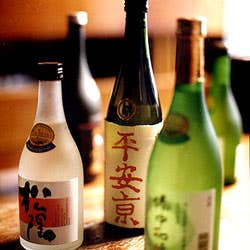
Sake Sense
Most sake sold in the U.S. is labeled, in romanized Japanese, by type and/or grade. Here are the most common terms:
FUTSU-SHU: The lowest grade and most widely consumed type of sake. Fortified and best when served warm; also used as cooking sake.
GENSHU: "Raw" sake, undiluted with water unlike most sakes. With an alcohol content of about 18 percent, it is well suited for serving on the rocks.
GINJO AND DAI-GINJO: These terms, which mean "superior" and "super premium," respectively, indicate the highest grades of both pure rice and fortified sake.
HONJOZO-SHU: A higher grade of fortified sake than futsu-shu, with a stronger flavor and fuller body. Can be served warm or cold.
JUNMAI-SHU: "Pure rice" sake, made from nothing but rice, koji rice, yeast, and water. Usually served cold or at room temperature.
KIJO-SHU: Made by substituting sake for half of the water used in brewing, this very rich and sweet brew is usually served as an aperitif.
NAMAZAKE: Unpasteurized sake bottled upon filtration. It has a tart, fresh flavor, but turns quickly once opened.
NIGORI: This "cloudy" or "impure" sake, either unfiltered or filtered through loosely woven fabric, is slightly sweet and usually effervescent, and is often served after a meal.
Keep Reading
Continue to Next Story










